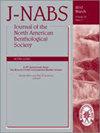Assessing sampling adequacy of mussel diversity surveys in wadeable Illinois streams
引用次数: 21
Abstract
Abstract Freshwater mussels are one of the most imperiled groups of animals in North America. Effective resource management and conservation efforts require reliable estimates of species diversity and their distributions. However, sampling protocols for qualitative mussel surveys have not been well established and tested. Furthermore, the sampling effort required for a given data-quality goal (90% of species captured) often varies substantially among sites, and application of a standard effort probably would introduce bias into assemblage comparisons. We tested the sampling adequacy of time-based hand searches. We conducted 16-man-hour (mh) searches at each of 18 wadeable stream sites in Illinois that differed widely in environmental factors and historical species diversity and collected 27 to 942 individuals and 5 to 18 species per site. We accounted for imperfect species detectability by using the Chao-1 richness estimator and measured sampling adequacy as the % of the estimated number of species sampled. Four-mh searches, a frequently used effort, captured 15 to 100% of all species with an average of 61%, and yielded estimates of richness that were not significantly correlated with the estimated total richness (Pearson's r = 0.39, p > 0.05). Ten-mh searches captured >70% of all species at >70% of sites and resulted in a significant correlation between observed and estimated richness (Pearson's r ≥ 0.78, p < 0.01). A Random Forests (RF) model based on watershed and habitat characteristics (e.g., stream size and dominant substrate types) accounted for 45% of the variance in sampling adequacy of 4-mh searches. Sampling adequacy decreased with increasing stream size and substrate size but increased with % forest in the riparian zone and logs in the stream. A 2nd RF model was developed to predict the number of man-hours required to capture 70 ± 3% of all species, and it accounted for 37% of the variance. Our findings should serve as a guide for setting standard sampling efforts for mussel surveys in Illinois and probably other midwestern states and should provide a baseline for setting site-specific efforts. Our modeling approach is of general applicability for addressing sampling-adequacy issues in studies of any assemblage.在伊利诺斯州可涉水溪流中评估贻贝多样性调查取样的充分性
淡水贻贝是北美最濒危的动物群体之一。有效的资源管理和保护工作需要对物种多样性及其分布进行可靠的估计。然而,定性贻贝调查的抽样方案尚未很好地建立和测试。此外,给定数据质量目标(捕获物种的90%)所需的采样努力通常在不同地点之间有很大差异,并且应用标准努力可能会在组合比较中引入偏差。我们测试了基于时间的手部搜索的抽样充分性。我们在伊利诺伊州18个环境因素和历史物种多样性差异很大的可涉水溪流地点进行了16个工时(mh)的搜索,每个地点收集了27 ~ 942个个体和5 ~ 18个物种。我们使用Chao-1丰富度估计值和测量的采样充分性作为估计的采样物种数量的百分比来解释不完全物种可检测性。4 -mh搜索是一种常用的搜索方法,它捕获了所有物种的15%至100%,平均为61%,并且得出的丰富度估估值与估计的总丰富度不显著相关(Pearson’s r = 0.39, p > 0.05)。10 -mh搜索在70%以上的地点捕获了70%以上的物种,并且观测到的丰富度与估计的丰富度之间存在显著的相关性(Pearson’s r≥0.78,p < 0.01)。基于流域和生境特征(如河流大小和主要基质类型)的随机森林(RF)模型占4-mh搜索样本充分性方差的45%。采样充分性随河流大小和基质大小的增加而降低,但随河岸带森林和河流中原木的增加而增加。第二个RF模型用于预测捕获所有物种的70±3%所需的工时,它占方差的37%。我们的研究结果应该作为伊利诺斯州和其他中西部州贻贝调查的标准采样工作的指南,并为设定特定地点的工作提供基线。我们的建模方法一般适用于解决任何组合研究中的抽样充分性问题。
本文章由计算机程序翻译,如有差异,请以英文原文为准。
求助全文
约1分钟内获得全文
求助全文

 求助内容:
求助内容: 应助结果提醒方式:
应助结果提醒方式:


